Summer 2023
-

The annual 2023 Great Tomato Plant Sale (GTPS) was very successful!
THANKS TO YOU!
Since Covid, this year's GTPS was our first 'in-person-only' event and extending it to three days worked out well. Many shoppers opted to avoid the long lines of opening day and made the decision to shop on Sunday or Monday.Thank you, Contra Costa County residents.
We are very grateful for your support!
-
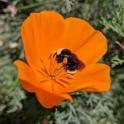
California Natives: A Smart Choice
by Kate Verhoef
UC Master Gardener volunteers often provide advice on reducing water use in home gardens. You can do this by selecting drought-resistant California native plants. Drought tolerance is not the only positive feature of many California natives. Here are more reasons to choose California native plants, and a list of recommended plants for a more drought-tolerant, fire-resistant landscape.
-
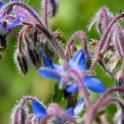
Remember the Pollinators
by Cynthia Engers
The third week of June is National Pollinator Week, an international celebration of the importance and vulnerability of pollinators. It was designated as such by the U.S. Senate in 2007 to raise awareness of the declining population of pollinators. Following the global focus on this topic, we are providing links to some of our in-depth coverage from past issues, as well as looking at the opportunity to support pollinators from a new angle: Edibles.
-
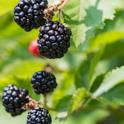
Small Spaces: Growing Berries in Containers
by David George
Berries, such as the plump, juicy ‘olallie’ blackberries, sweet red raspberries, or delicious blueberries, are among the most well-liked and nutritious container-grown foods. The majority of berry cultivars ripen between late April and early July, although some also yield a second, lesser crop on young canes in the fall. Because of their high concentration of antioxidants, necessary vitamins, fiber, and trace minerals, berries have been dubbed a "superfood".
-

Climate Change: Improve your garden’s ability to handle too much rain!
by Robin Mitchell
This past winter, California had record precipitation in the form of both rain (in the San Francisco Bay Area, as well as other places) and snow in the mountains. And the previous years we experienced drought.
Many homeowners experienced flooding and erosion in their gardens, which were not designed for such large amounts of rain. Is it possible to make your garden more resilient when the weather delivers that much water?
There are a few ways to improve your garden’s ability to handle too much rain.
-
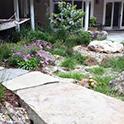
Climate Change: Too little water in fire prone California
by Hedwig Van Den Broeck
For many years it was the severe drought, dwindling reservoirs, and devastating wildfires that captured the headlines; this winter it was the atmospheric rivers causing disaster. Historically, both drought and flooding have contributed to California's water issues. Unfortunately, due to climate change, these swings between wet and dry have grown more extreme.
Here are some ideas to help you create and maintain a drought-tolerant garden that will protect you better again wildfires and at the same time beautify your landscape and property as well.
-
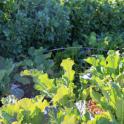
Family Harvest Farm: New East County Demonstration Garden Coming Soon!
by David George
A new East Contra Costa County Master Gardener demonstration garden is in the works! Funding approval was gained in February and work is now in progress for the garden on a portion of the Family Harvest Farm (FHF) grounds on Power Avenue in Pittsburg. The area is owned by PG&E as an easement for overhead power distribution lines, but 3.5 acres were leased from PG&E in 2016 by the John Muir Land Trust (JMLT) to develop an urban garden. The trust hired 3 staff members to manage the FHF development, to recruit and train apprentices, and to coordinate with the UC Master Gardener Program of Contra Costa County (UCMGCCC) for their new 2,000 square foot demonstration garden.
-
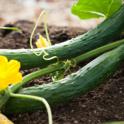
Summer Tasks in the Garden
Let's not forget to take care of our gardens this summer in addition to all the fun activities we have planned, especially when temperatures are rising and our priceless landscape begins to get thirsty.









